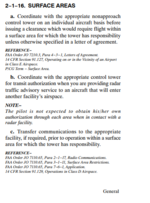Acquired Taste
Forum Sage
- Messages
- 1,026
Dumb question that got me thinking. Let's say as an approach controller, you're talking to a vfr a/c receiving flight following. Is that a/c authorized to transition through a class D since 2 way radio comms are established? Or does that only count if they have comms with tower? Because at least where I work, approach still has to call and point out the guy going through the delta.
3-2-5 of the AIM states: Arrival or Through Flight Entry Requirements. Two-way radio communication must be established with the ATC facility providing ATC services prior to entry and thereafter maintain those communications while in the Class D airspace. Pilots of arriving aircraft should contact the control tower on the publicized frequency and give their position, altitude, destination, and any request(s).
Second unrelated question: do you guys take the flash on guys below your mva from other sectors when they are climbing up to at least meet your mva? I was always taught to wait but my trainee was arguing that as long as you don't vector them it's fine. I thought i had some decent counterpoints but I have since forgotten.
3-2-5 of the AIM states: Arrival or Through Flight Entry Requirements. Two-way radio communication must be established with the ATC facility providing ATC services prior to entry and thereafter maintain those communications while in the Class D airspace. Pilots of arriving aircraft should contact the control tower on the publicized frequency and give their position, altitude, destination, and any request(s).
Second unrelated question: do you guys take the flash on guys below your mva from other sectors when they are climbing up to at least meet your mva? I was always taught to wait but my trainee was arguing that as long as you don't vector them it's fine. I thought i had some decent counterpoints but I have since forgotten.
